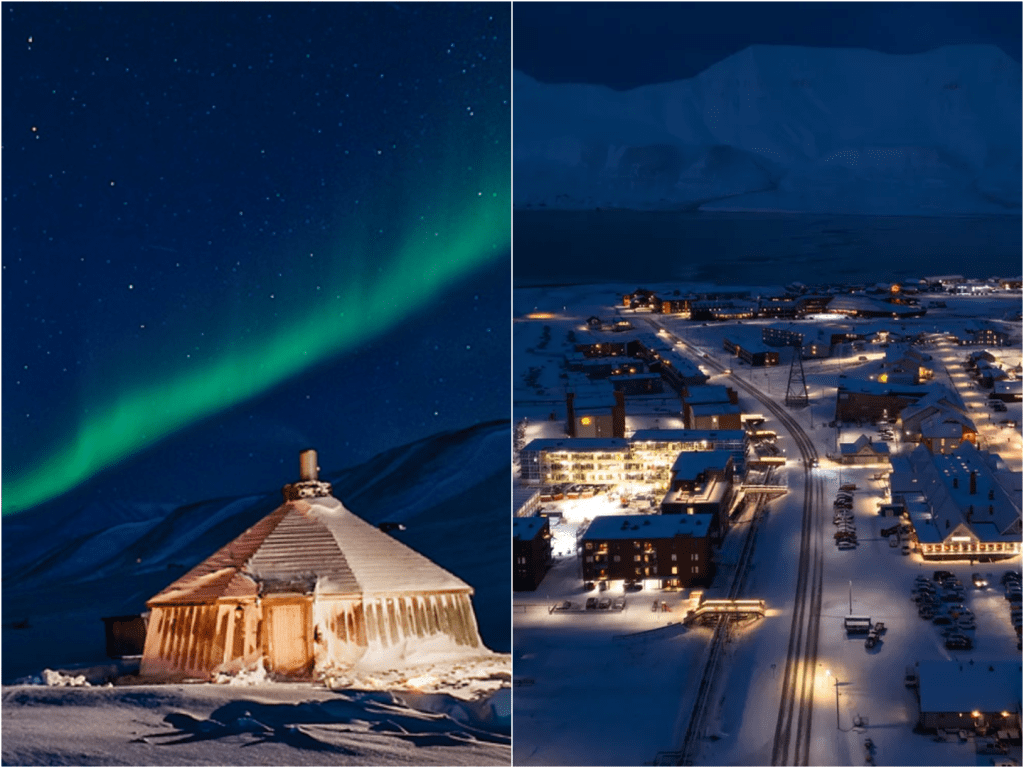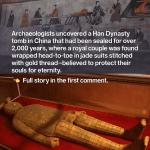Living in Darkness: Exploring Life in Longyearbyen, the Town That Never Sees Daylight
Pulling into Longyearbyen airport, the chilled Arctic air enveloped us instantly. It was late October, and though the calendar showed day, I felt like I’d landed at midnight. I was told that very soon, the sun would disappear entirely for months. In Longyearbyen, the largest settlement in the Svalbard archipelago, the Polar Night descends around October 26 and doesn’t fully lift until mid-February. It felt surreal—how does a town function when daylight is just a memory?
Longyearbyen is home to around 2,400 people, with a vibrant mix of locals, scientists, miners, and adventure seekers from over 50 countries. Founded in 1906 as a coal mining camp by American John Munroe Longyear, it has evolved into a curious blend of frontier settlement and academic hub under the University Centre in Svalbard. It’s a place where rugged individualism meets warm communal spirit, cooking clubs and winter concerts—despite never seeing daylight for months.
The iron grip of darkness starts gradually. Late October brings short, pale twilight. By mid-November, the sun stays below the horizon, and Longyearbyen enters true Polar Night: days merge with nights under perpetually dark skies. Yet locals call this time the “blue hour,” a quiet beauty in muted deep blues and purples. During this deep winter, street lamps glow softly, solar panels lie dormant, and the town holds collective breath for the Northern Lights to dance overhead even in midday – the advantage of constant darkness.
I spent my first few weeks tucked beneath thick blankets, adjusting to irregular days and restless nights. The rhythm of life changes. After sunset, people gather indoors—wine glasses, board games, and piano recitals in the cultural hall become lifelines. The community leans on festivals like Polarjazz in February, a jazz celebration born in the Polar Night since 1998, or “Sunfest,” the spring celebration marking the sun’s return. These cultural moments keep spirits high even when the sky is pitch black.
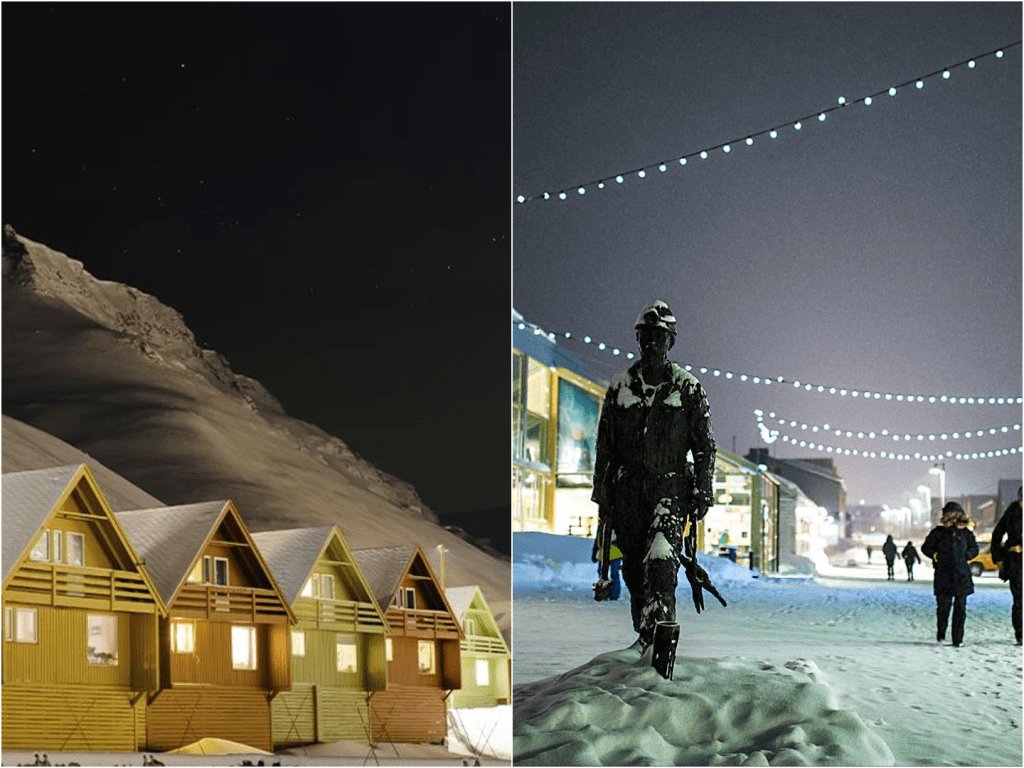
Social warmth isn’t just survival—it’s a strength. Dinner party culture is strong here, partly because visas bring new faces every few years, and those passing through carry new stories. One evening, I joined a communal potluck at a research lodge. People shared reindeer dishes, local art, and laughter echoing off the snow walls. We welcomed researchers, miners, artists—all pulling together through darkness and cold.
But life in Longyearbyen has practical edges, too. With the nearest doctor hours away by plane, emergency services operate 24/7, and armed wildlife patrols remind residents that outside the “safe zone,” polar bears roam. Children walk to school bundled in thick gear; adults commute by snowmobile or utility vehicle. Buildings are engineered for permafrost, some on steel foundations that withstand shifting ground due to warming temperatures.
Despite the cold, there’s harmony with the wilderness. People glide on skis at dawn, use snowmobiles to explore glacial caves, and tread gently under aurora-lit skies. During Polar Night, the Northern Lights shimmer overhead—not only at midnight but on moonlit mid-days—turning black skies into galleries of green and pink.
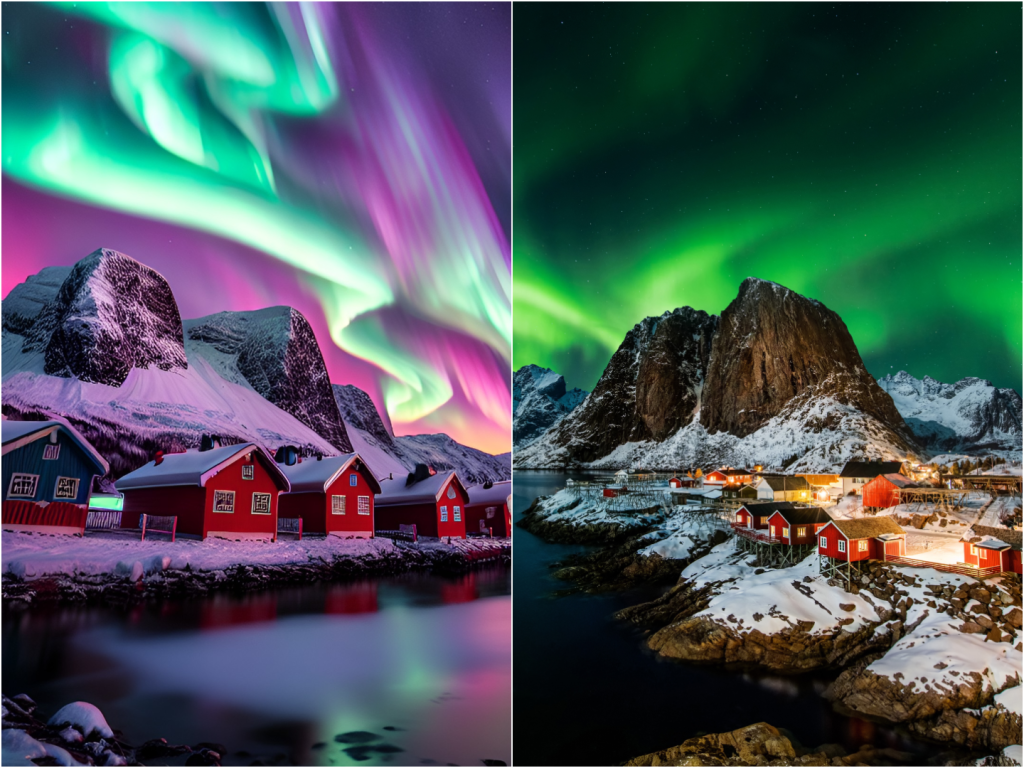
Then spring edges in. Around February, the first peek of sun becomes a communal ritual. Residents flock to the old hospital steps, cheering as sunlight kisses the steps. It’s brief—sometimes only seconds—but its impact lingers. Suddenly, colors return. Sky, mountains, houses—all hit by a new kind of glow. Midnight sun follows in April, bathing the town for 99 days until late August.
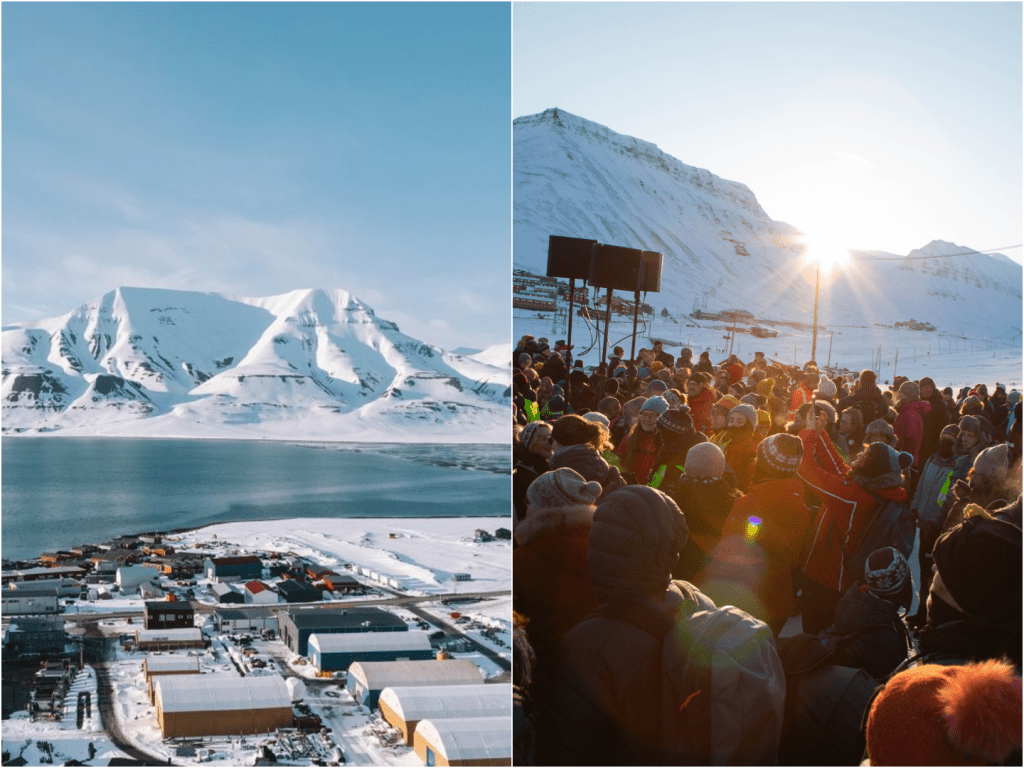
Still, climate change looms. Temperatures are rising twice as fast in Svalbard as the global average, threatening permafrost and building stability. The mayor’s vision? Turning Longyearbyen into Norway’s first zero‑emission town, with solar, wind, green hydrogen, and resilient infrastructure. There’s optimism in this icy frontier—where the lessons of adaptation and community resilience can be globally meaningful.
Living in Longyearbyen taught me something intimate: darkness can feel bright when shared, and light can matter more when it’s earned. Where else does a town measure life in minutes of sunlight, in aurora arcs, in snow-crunch symphonies? I think of Cecilia Blomdahl, who came for an adventure and stayed a decade. She describes Polar Night as “one long dream” illuminated by auroras and the deep sense of safety in this remote village.
This is no vacation destination—it’s a way of life. But in Longyearbyen, despite the cold, fear, or unknown, warmth comes from human bond. They say there are no cemeteries here; people who die must be taken off-island—permafrost makes burial impossible. Death itself doesn’t rest here. But life does. Quietly. With purpose.
If you visit, silence greets you first. Then awareness. Then awe. And yes, when the sun returns, it feels sacred. Living months without daylight, only to see it again, pulses home a lesson: that light isn’t a right—it’s a gift. And darkness is just another part of beauty.
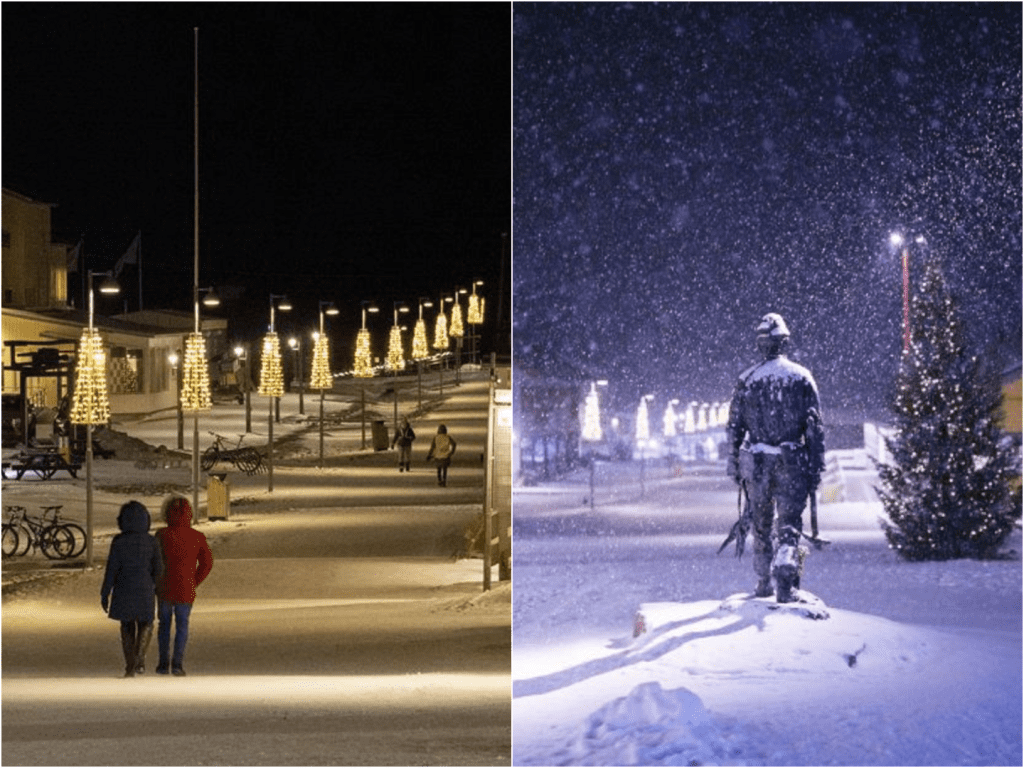

Lena Carter is a travel writer and photographer passionate about uncovering the beauty and diversity of the world’s most stunning destinations. With a background in cultural journalism and over five years of experience in travel blogging, she focuses on turning real-world visuals into inspiring stories. Lena believes that every city, village, and natural wonder has a unique story to tell — and she’s here to share it one photo and article at a time.
